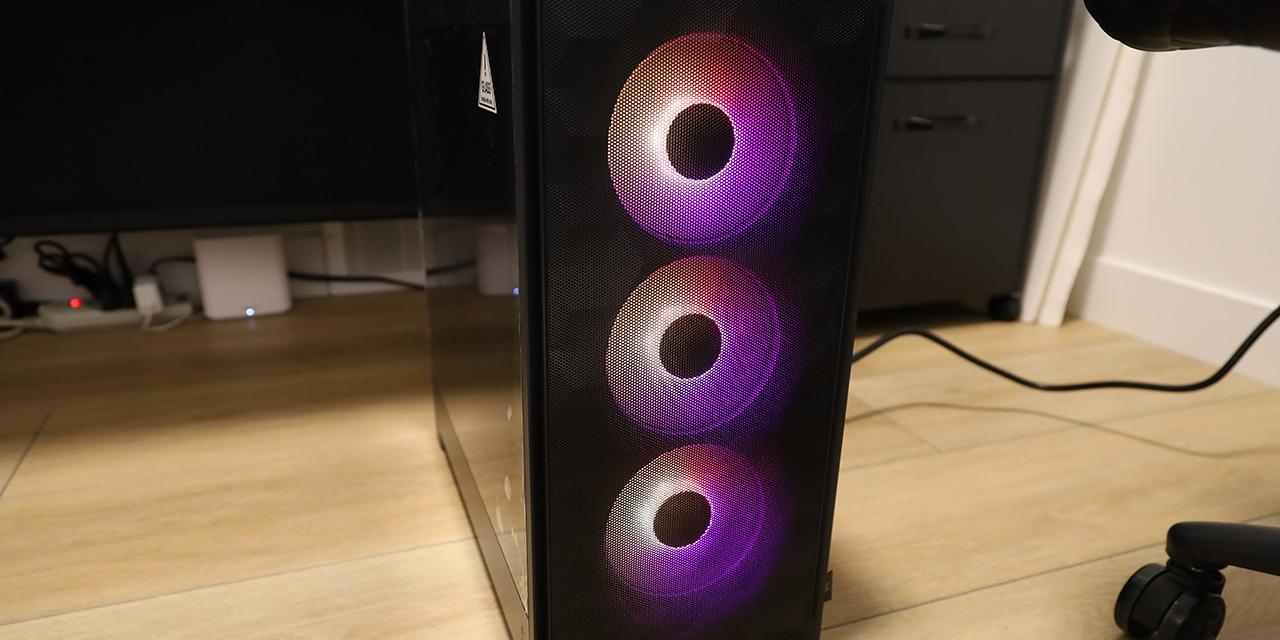Page 2 - Physical Look - Hardware
Like all true wireless earphones, Philips provides a carrying case that doubles as a charger for the earbuds. The charging case has a simple matte black plastic finish with Philips' logo in front. Both its shape and design are quite conservative looking, but I am not complaining. It measures in at 4.1 cm in height, 6.5 cm in width, and 3.6 cm in depth, which is quite compact and can be conveniently carried in a bag or jacket pocket. In front, there are four blue indicator LEDs to indicate the current charge status, where four lit LEDs indicate 75% to 100% of charge, three LEDs indicate 50% to 75% of charge, and so forth. The blue LEDs only light up when it is the case is charging or when the case is charging the earbuds.
Each piece of the Upbeat True Wireless SHB2505 has a 50mAh built-in battery for up to 3 hour of battery life. They take approximately 1.5 hours to charge using the charging case. No quick charge specifications are noted. The charging case supports up to three recharge cycles, or an additional 9 hours of music, for the earbuds with its 500mAh internal battery. The charging case itself also takes about 2 hours to charge via its Micro-USB port. I would much prefer a USB Type-C port, given it is 2019. That aside, from my experience, these estimates seem to be pretty close to reality with the test battery life at 2.7 hours at 50% volume. I never had a problem with running out of battery in my day-to-day use, whether it is my daily commute on public transit or short continental flights within the US and Canada in the past few weeks.
The Philips Upbeat True Wireless SHB2505 earbuds are revealed once you flip open the top of the charging case. At first glance, the earbuds are equally as conservative looking as the case, where the exposed portion comes in a glossy black finish with Philips' logo on the outside. The part where Philip's logo is located is also a tactile button, which I will discuss in just a moment. I am a fan of its subtle looks, and it works quite well in not calling too much attention to itself in day-to-day use. The Philips logo is also where a small indicator LED is located to indicate its charge status. It lights up white when it is charging, and turns off when it is done.
The Philips Upbeat True Wireless SHB2505 earphones connect to your audio source device via Bluetooth 5.0. No profile other than A2DP are specified, so I assume there is no aptX or AAC. Instead, it uses SBC, or Subband Coding, which is the default Bluetooth audio codec with reasonably good audio quality and low processing power requirements. Adding support for advanced audio codecs will improve the sound quality of these earphones.
Each side of the Philips Upbeat True Wireless SHB2505 will automatically turn on once you pull it out of the cavity in the case. As you can see in our photo above, since there are no wires, Philips uses a pair of pogo pins on each side to keep those electrons flowing when it is inside the charging case. You can use these earbuds in mono or stereo mode, and it will announce in your ears when the earphones are turned on in plain English. The delay is well-timed so you will hear "right channel connected" and "left channel connected" when you have the corresponding side in your ears.
The design of these earbuds is symmetrical and the buttons on both sides do the exact same thing in order to facilitate its mono mode support. Each button can be used to control the voice assistant, calls, and music. Soft rubberized wing tips and three sleeve sizes are included to maximize comfort and fit. From my experience, I found the fit to be of average; when I am running or skating, I often find the earbuds to easily lose its seal. It is not that the earphones have ever fallen out of my ears -- trust me, I tried shaking them out and it would not -- but the fit could be better in my opinion.
Taking off the sleeves reveal its 6mm neodymium acoustic drivers rated at 20 Hz to 20 kHz frequency response and 5mW maximum output power. Its 16 ohm impedance and 90dB sensitivity is standard fare. Philips claims they are designed to give you great sound and punchy bass, which I will discuss in my auditioning results in just a moment. Like many modern in-ear monitors, the drivers aim directly into your ear for a more direct and transparent sound reproduction characteristic. At the same time, it makes the earphones much easier to clean in the long run too. The oval-shaped acoustic tube via the sleeves assist the aim into the user's ear canals, and since these earphones are designed for a closed configuration, the Philips Upbeat True Wireless SHB2505 are made for passive noise canceling.
With all this in mind, how will they perform? As always, we have the entire Page 3 dedicated to presenting our auditioning results.
Page Index
1. Introduction, Packaging, Specifications
2. Physical Look - Hardware
3. Subjective Audio Analysis
4. Conclusion





